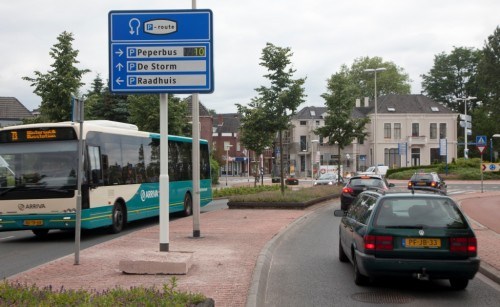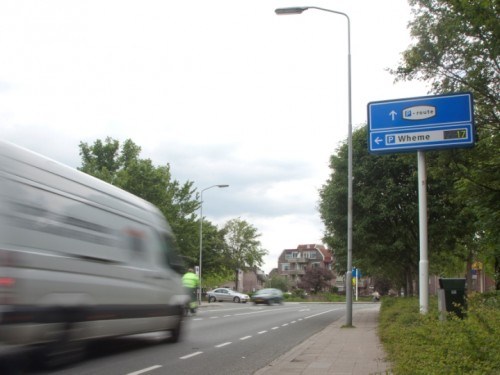Winterswijk, a Dutch municipality, recently set up a research program to find out if and how their new parking-guidance system influences the traffic throughout the city. The new system, which they implemented earlier this year, contains sensors that were placed on every parking space in the city. These sensors are connected to the guidance-system and should spread the parking pressure at peak times and improve the accessibility of the city. The systems guides drivers to available parking spaces with real time parking data displayed on signs at the side of the roads and, maybe even more important, shows them were there is no parking space left.
The research concluded that the new system has a very positive effect on how people in the city search for a parking space.
Parking Plan
The municipality of Winterswijk appointed Keypoint Consultancy to analyze the effect of the new system. The analysis proves that the traffic searching for a parking space has strongly reduced because of the guidance system. Also drivers announced that they find the new system very useful.

Signs with real time parking data, guiding drivers to available parking spaces
Downtown parking situation before the new system
In 2008 the municipality of Winterswijk first hired Keypoint Consultancy to analyze the current parking situation downtown because of the increasing parking pressure and the decreasing accessibility of the city center. Motivition for this research was that the many people searching for a place to park caused nuisance in the surrounding residential areas. Thanks to the research in 2008, they could set up a plan to improve the downtown parking situation.
Wireless sensors
In order to spread the traffic, reduce the pressure in the surrounding residential areas and offer drivers a better parking service, Winterswijk appointed the Dutch company Nedap to implement wireless sensors to the parking places in the city to measure the occupancy of the parking spaces. They also places signs on the sides of the road informing drivers about the current available capacity of each parking place and direct them to available spaces. With this system it is easier for drivers to quickly find a parking space without having to drive around for too long.
Benefits
The wireless sensors provided by Nedap Avi are a part of the Sensit line. Sensit consists of a network of wireless sensors that detect the current availability and occupancy of each parking space individually and provides real time parking data that can be used to direct the traffic to available parking spaces. This has several benefits:
- Drivers experience less stress finding a parking space
- It benefits the traffic flow
- It reduces carbon emission
- A better use of available parking spaces
- Maximum return on investments in parking
Wireless sensor on parking space
Research conclusions
A while after implementing the new guidance-system and wireless sensors, Keypoint Consultancy again analyzed the parking situation in order to see the results of the system and compare the situation with the situation before the new system. The results are clear:
Parking occupancy:
- The new parking system reduces search traffic on peak times
- The average parking accupancy has increased on Saturdays
- The last free parking spaces are found quicker and easier by drivers. After the system ws implemented, the several parking facilitieswere more often fully occupied. Before the new system the parking facilities weren't fully occupied, not even once a day
- The parking spaces are used from an earlier time of the day
- Better use of the existing parking spaces means less need for realizing new parking spaces
User experience:
- 89% of the people who park in Winterswijk find the new guidance system very useful and user-friendly
- 23% of the respondents who notice the signs of the side of the roads say that they base their choice of parking facility on the real time data displayed on the signs. Other studies in other cities in the Netherlands show an average 10 to 15%
- 47% of the respondents consciously perceive the information on the signs. This number is lower than similar studies in the Netherlands, probably because some people are already aware of the parking situation downtown.
For more information, please visit the Nedap Avi website.

